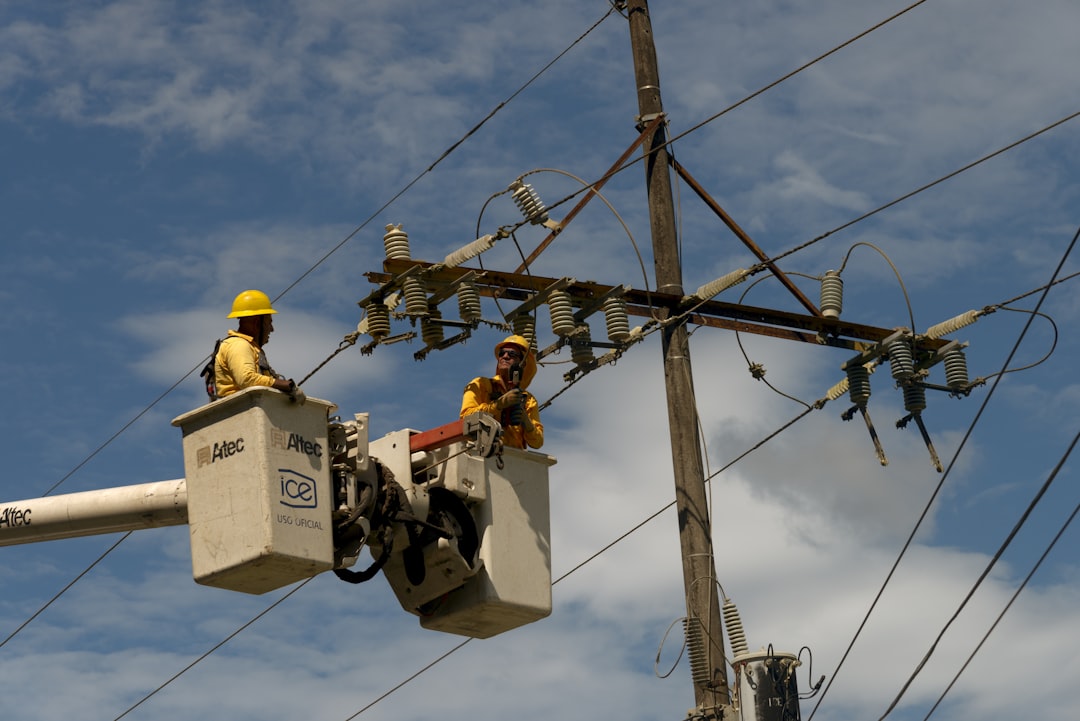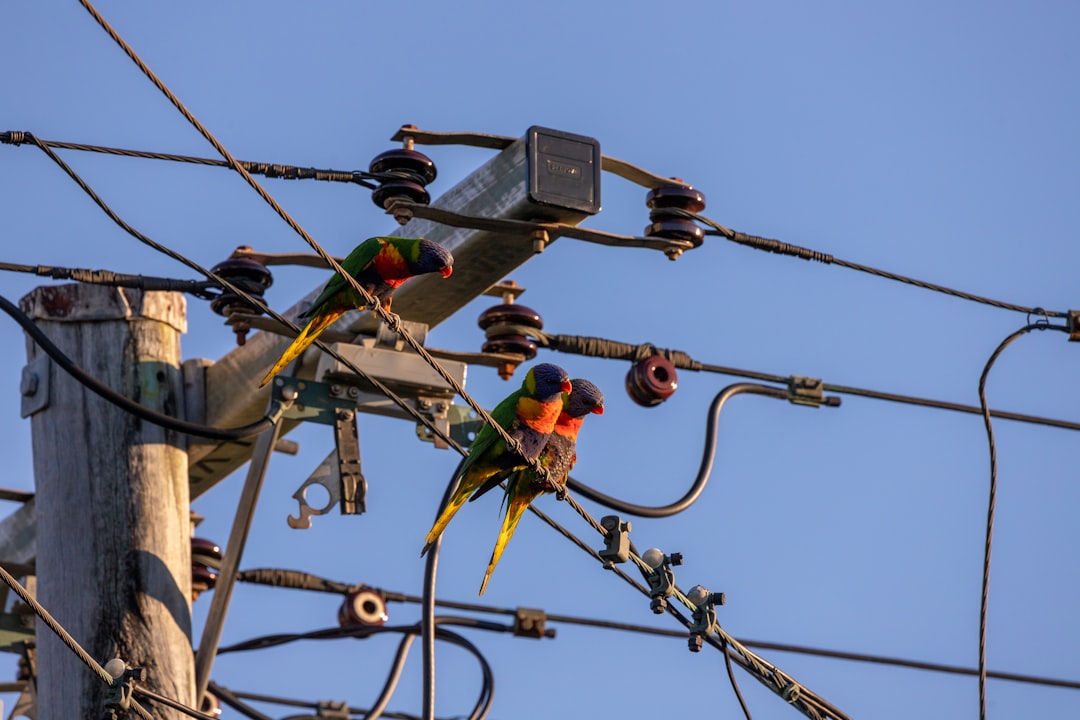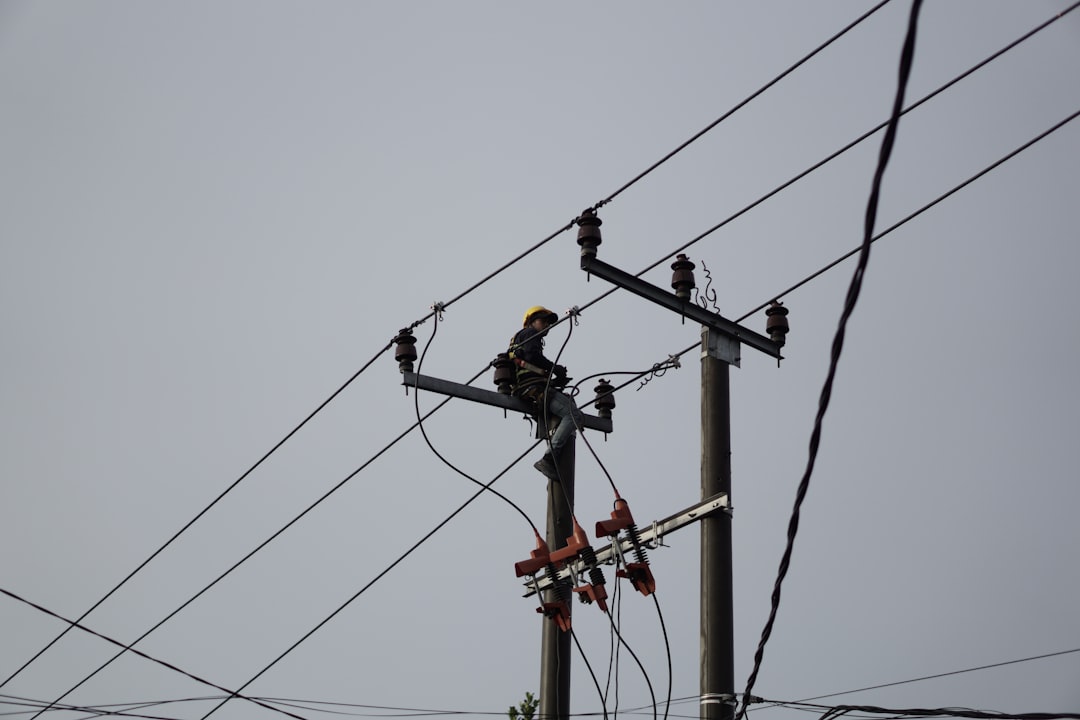

Engage prospects with a scan and streamline customer engagement with FREE QR code marketing tools by Sona – no strings attached!
Create a Free QR CodeFree consultation

No commitment

Engage prospects with a scan and streamline customer engagement with FREE QR code marketing tools by Sona – no strings attached!
Create a Free QR CodeFree consultation

No commitment
The electrical contracting industry is at a pivotal moment as digital marketing and smart technology change the way businesses connect with customers. Traditional paper-based methods and word-of-mouth advertising are no longer sufficient to capture new business or retain loyal clients. This shift is particularly challenging in an industry where high-value projects and repeat service depend on timely, frictionless communication. Missed opportunities often occur simply because high-intent prospects are not recorded, or because account-level engagement is invisible without the right tools.
Electrical contractors now face increasing pressure to adopt digital tools not only to gain a competitive edge but also to create seamless, measurable customer journeys. If ignored, this results in lost leads, incomplete data, and gaps in follow-up. QR codes have quickly emerged as a force multiplier, turning every printed brochure, signage, or truck decal into a digital gateway for information, service requests, and customer engagement, as outlined in QR codes in marketing.
By integrating QR codes at key touchpoints, electrical contractors can streamline customer reviews, simplify appointment scheduling, enhance safety compliance documentation, and even enable innovative AI-driven tool tracking systems. Effective QR code strategies can transform everyday interactions, like tracking who scanned your truck decal or ensuring every tool checkout is logged, into actionable, high-value opportunities for both marketing and operational growth.

QR codes enable electrical contractors to seamlessly connect their physical and digital worlds, closing the data gap that often leads to missed high-value prospects and untracked jobsite interactions. Many contractors struggle to capture interest shown at the field level when prospects browse service information or scan vehicle graphics without ever filling out a form. Modern QR deployments address this by making it effortless for any site visitor, customer, or partner to initiate touchpoints that feed directly into operational workflows.
Replacing outdated analog processes is where QR codes shine. Printed brochures become trackable landing pages. Paper forms convert into mobile-optimized web forms that auto-fill CRM fields. Manual sign-in sheets at trainings shift to scan-in attendance with exportable data. The result is a measurable pipeline where every offline action becomes a digital signal you can follow up on with precision.
By replacing outdated paperwork with QR-enabled touchpoints, contractors can automate follow-up, personalize engagement, and reduce the risk of missing valuable prospects or critical compliance steps. Platforms such as Sona QR’s product overview also sync each scan with account-level profiles, providing a real-time dashboard that fuels both sales and operations while keeping your campaigns editable and measurable.
Electrical contractors constantly battle the challenge of converting offline interest, such as a truck wrap viewed on a jobsite or a business card handed out at an event, into digital action that is tracked and attributable. Often, high-quality leads are never recorded because they do not submit a form, call in, or email directly. QR codes offer targeted relief for these points of friction by transforming static assets into dynamic gateways to action, with documented QR benefits for construction businesses.
They also address common customer expectations around speed and simplicity. Most building managers and homeowners do not want to download an app to book a service, retrieve a warranty, or access a permit checklist. A QR code placed at the moment of need gives them instant access and captures intent for your team to act on.
For example, QR codes on safety checklists enable digital record-keeping at project handovers, making compliance checks auditable and reducing manual errors. Review request stickers on invoices offer a direct route to reputation growth, transforming a traditionally overlooked moment into an actionable, trackable touchpoint that keeps your brand top of mind and searchable.

Electrical contractors operate across a diverse set of environments, from office invoicing to dusty jobsites. Different QR formats fit different moments and intents. Choosing the right format and destination keeps scanning simple and outcomes consistent with your goals.
Dynamic codes are particularly useful in electrical contracting because documentation, certifications, and service offers change over time. A dynamic link lets you update content on the fly, ensuring compliance and marketing remain aligned even after materials are in the field.
Dynamic QR codes managed through a platform like Sona QR make it simple to update destinations and maintain consistent branding. You gain centralized control, versioning, and analytics that scale across teams, regions, and use cases without repeating costly reprints.

For electrical contractors, overlooked growth often hides in the transition from anonymous offline engagement to actionable digital follow-up. Leads and signals are frequently missed because on-site interactions are disconnected from CRM or marketing systems. Strategic QR placement fills that gap and helps you attribute what really works.
Think about the surfaces your audience already sees daily. Fleet vehicles, jobsite signage, invoices, and handover packages are high-value real estate. When each of these surfaces invites a clear next step and feeds data back to your systems, the field becomes a measurable channel.
These touchpoints steadily build trackable, segmented prospect lists, creating growth in places where contractors previously struggled with operational blind spots and lost attribution. Over time, you will learn which placements, messages, and offers produce predictable revenue.

Service Request Initiation can be solved with QR stickers on utility panels or service doors. Property managers or tenants scan to submit tickets that route to your CRM with location, priority, and photos. This reduces missed or delayed responses caused by misplaced forms or incomplete voicemails, and it increases your ability to triage by urgency.
Tool and Equipment Tracking benefits from QR tags affixed to tools, ladders, and test equipment. Scans log checkouts and returns, track condition, and trigger alerts for overdue items. This automation cuts inventory losses and gives managers real-time visibility into utilization across crews and sites.
Customer Review Generation is one of the most reliable growth levers available. Placing QR codes on invoices, jobsite signage, email footers, and handover packets encourages satisfied clients to leave reviews at peak satisfaction moments. Automated reminders and simple scan-to-review flows dramatically increase response rates and strengthen your local search presence. Use a google reviews QR to simplify the flow.
These use cases remove multi-step manual processes and support real-time data capture. Tool audits, service follow-ups, and customer testimonials become documented and actionable. As you stack these wins, your organization begins to operate on live signals rather than memory or guesswork, which accelerates both operational and marketing outcomes.
Every scan is a high-intent signal. Many contractors lack the systems to retain, segment, and engage based on this data, which leaves value on the table. By deploying multiple QR codes across touchpoints, you can automatically create segments that reflect behavior, channel, and lifecycle stage.
Start by mapping your buyer journey to physical surfaces. An awareness scan on a truck wrap is very different from a post-project review scan or a tool checkout scan by a technician. With the right tags and destinations, each one can trigger different follow-up and scoring in your CRM or ad platforms.
Advanced platforms like Sona QR and Sona.com enrich scan data at the company level, transforming a basic scan into an attributed buyer journey. This connects offline events with digital engagement and helps automate high-priority tasks for your marketing and sales teams. For tactics, see Sona’s intent-driven retargeting.
Many electrical contractors struggle with fragmented marketing and missed touchpoints. Print assets drive awareness, but they rarely convert to leads unless you connect physical and digital interactions. QR codes provide the bridge, turning passive impressions into trackable, one-click actions that feed your marketing engine.
As you roll QR codes into your broader mix, think of them as connectors rather than add-ons. They tie together brochures, decals, events, and invoices with your website, analytics, and CRM. When you know where scans occur and what actions follow, you can allocate budget confidently and scale what works.
Integration platforms centralize these streams and auto-sync scan activity with CRMs, Google Ads, and omnichannel nurturing campaigns. This solves the common headache of disjointed data and missed upsell or cross-sell opportunities while keeping reporting accurate and actionable.
Successful QR campaigns follow a predictable lifecycle: plan, build, test, deploy, measure, and optimize. Electrical contractors can apply the following framework to launch new use cases quickly while ensuring scan experiences are reliable in field conditions.
To make each step tangible, pair it with the physical surfaces you already own, like trucks, safety boards, invoices, and equipment. Use dynamic codes wherever you anticipate needing to update content or capture analytics.
Focus first on the business obstacle. Are you losing leads from jobsite signage, struggling to collect reviews, or spending hours on tool audits? Selecting a specific pain point keeps scope tight and results measurable.
Define a primary outcome, such as increasing quote requests from vehicle scans, reducing tool loss by improving check-in compliance, or improving post-service review volume. Your later tracking and optimization should tie back to this outcome.
Choose dynamic QR codes for most campaigns. Dynamic codes allow you to change destinations, add UTM parameters, and view analytics without reprinting materials. Static codes are suitable for fixed destinations like a PDF manual that will not change.
Consider security and governance as well. For safety or compliance documentation, you may want controlled access that logs who scanned and when. For consumer-facing offers, keep the experience frictionless and app-free.
Design QR assets with clarity and contrast, drawing from QR design tips. Use a clear border, a branded frame, and a short, benefit-driven CTA. Apply your brand colors carefully to maintain readability, and ensure adequate quiet zone around the code so scanners can pick it up quickly.
Field test placement before full deployment. Jobsites introduce glare, dust, and physical obstructions that can reduce scannability. Test with multiple devices, angles, and lighting conditions to ensure quick scans across environments.
Roll out codes in high-traffic, high-intent placements first. Company vehicles, site safety boards, invoices, and handover packets are proven performers. Assign unique codes to each location or asset to isolate performance and spot underperforming placements.
Train your team to point out QR codes onsite and explain the benefit. A quick reminder from a technician at job completion can double scan rates for warranty registration or review requests.
Monitor scans using dashboard analytics. Watch for drop-offs between scans and conversions, and adjust destinations, copy, or placement to improve results. A small change to the CTA or landing page can significantly increase completion.
Feed scan data into your CRM and ad platforms. Use segments to trigger email or SMS sequences, and build custom audiences in Google Ads or Meta based on scan behavior. Retarget scanners with content that matches their intent and stage.
Platforms now support this entire lifecycle, making QR campaign management both measurable and repeatable. With Sona QR, you can manage codes centrally, monitor performance, and sync scan activity with Sona.com for full-funnel attribution so that follow-up never stops at the initial scan.
Without reliable analytics, electrical contractors risk losing sight of business impact from field-level engagement. Too often there is no attribution to show which contact viewed a demo, accessed compliance forms, or submitted a review. Modern analytics close this gap by tying scans to actions and actions to revenue.
Start by capturing baseline metrics: total scans per asset, unique scanners, scan-to-form rate, and scan-to-book rate. Then connect those events to downstream outcomes such as quotes created, jobs scheduled, invoices sent, and revenue won. Over time you will see which placements and offers shorten sales cycles or grow average deal size.
Some contractors solve data visibility challenges with integrated attribution solutions that match scans to web visits, email engagement, and sales outcomes. This helps refine local SEO strategies, pinpoint marketing gaps, and optimize resource allocation so that your field activity translates into measurable growth.
Building a scalable QR program requires more than printing codes. It demands clear messaging, consistent measurement, and operational follow-through. The following practices will help you sustain performance and compound gains over time.
Tie every code to a next step you can measure. Whether it is scheduling, documentation access, or review generation, define what success looks like and automate the follow-up so that momentum does not fade after the scan.
A creative deployment example: place a QR on warehouse racking that checks out a torque wrench to a technician, logs the event in your asset system, and schedules an automatic return reminder. Another example: add a QR to EV charger installations that takes homeowners to a care guide, warranty activation, and a review prompt, all in one mobile flow.

Case studies from the field show how small changes in process can generate outsized results. They also highlight the value of matching QR placements to moments of intent, such as handovers or vehicle visibility at traffic stops. For more contractor-specific ideas, see QR ideas for contractors.
These examples demonstrate the compounding effect of turning offline moments into digital signals. When codes are easy to see and the value is clear, contractors get concrete data from surfaces they already own while opening new channels for growth.
Field adoption can falter if teams do not address a few predictable challenges. Low scan rates often trace back to unclear calls to action, poor placement, or destinations that do not match the moment. Similarly, great scan volume can be wasted if there is no follow-up process or attribution plan.
Industry leaders emphasize training and governance, and as ECMag reports, digital technologies drive productivity and safety across electrical construction. A ten-minute briefing during toolbox talks can ensure technicians know how to explain the benefit, verify scannability on site, and report damaged codes for replacement. Governance keeps destinations current and guarantees that analytics are clean and actionable.
In one contract services firm, consolidating review requests into QR-enabled invoices cut missed follow-up calls drastically. It is a reminder that process design and placement matter as much as the technology. Consistent branding and direct calls to action multiply conversion rates because they remove guesswork at the point of engagement.
For electrical contractors working to navigate a rapidly digitalizing industry, QR codes do more than simplify field processes. They resolve long-standing gaps in data capture, attribution, and customer engagement. By embedding QR solutions throughout the customer journey, from fleet branding to tool management to post-job reviews, contractors can surface high-value prospects, automate compliance steps, and deliver outreach at precisely the right moment.
Embracing connected strategies that unify offline and online activity allows contractors to stand out in both local and national markets. The field becomes a measurable channel. Every scan becomes a signal. And each signal fuels smarter retargeting, faster follow-up, and better resource allocation that improves the bottom line.
QR codes represent a transformational opportunity for electrical contractors to unify operations with marketing, reducing the risk of lost leads, missed segmentation, and incomplete attribution. With platforms like Sona QR for code creation and management, and Sona for identity resolution and revenue attribution, you can make every interaction actionable and measurable. Start creating QR codes for free.
QR codes have transformed the electrical contracting industry from traditional, manual workflows into dynamic, efficient access points that enhance both service delivery and customer engagement. Whether it’s streamlining equipment maintenance, enabling instant access to electrical system documentation, or improving client communication, QR codes replace cumbersome processes with quick, mobile-friendly interactions that save time and reduce errors.
Imagine instantly providing your clients and technicians with up-to-date wiring diagrams or safety checklists right at the job site—no delays, no paperwork lost. With Sona QR, electrical contractors can create dynamic, trackable QR codes in seconds, update linked content anytime without reprinting, and monitor every scan to optimize operations and customer satisfaction.
Start for free with Sona QR today and empower your electrical contracting business to deliver smarter, faster, and more connected service experiences.
QR codes transform printed materials and assets into digital gateways that capture leads, streamline customer engagement, and provide measurable data to optimize marketing and operational processes.
QR codes enable app-free customer interactions, dynamic content updates, transparent tracking of engagement, cost-effective scalability, and improved compliance and tool tracking.
Digital marketing helps by capturing high-intent prospects through measurable customer journeys, automating follow-ups, personalizing engagement, and integrating offline and online data for smarter retargeting and resource allocation.
Using QR code tags on tools to log checkouts, returns, and condition provides real-time visibility, reduces inventory loss, and automates compliance tracking.
By placing QR codes on invoices, jobsite signage, and handover packets that link directly to review platforms, contractors can increase review response rates with simple scan-to-review flows and automated reminders.
Contractors can use dynamic QR codes directing clients to mobile-optimized web forms, safety documents, warranty activation pages, and service portals without requiring app downloads.
By adopting QR code strategies that unify offline and online touchpoints, provide measurable engagement data, automate compliance and follow-ups, and create personalized customer journeys.
Best practices include deploying codes on core assets, defining clear KPIs, designing with clear calls to action, using dynamic codes for flexibility, testing for scannability, and integrating analytics for continuous optimization.
Contractors can improve engagement by enabling instant access to service requests, reviews, and information via QR codes, automating follow-up communications, segmenting audiences based on scan data, and integrating with CRM systems.
Use Sona QR's trackable codes to improve customer acquisition and engagement today.
Create Your FREE Trackable QR Code in SecondsJoin results-focused teams combining Sona Platform automation with advanced Google Ads strategies to scale lead generation

Connect your existing CRM

Free Account Enrichment

No setup fees
No commitment required

Free consultation

Get a custom Google Ads roadmap for your business






Launch campaigns that generate qualified leads in 30 days or less.
